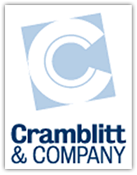PR in practice: You’re full of it
August 31st, 2009
Marketing and PR people say a lot of stuff that they don’t really believe. Or, that they’ve convinced themselves is true. And when it gets into the public’s hands, it invariably rings false.
How often do you see a press release or marketing piece that describes a technology product as “robust,” “intuitive,” “flexible,” or “setting a new paradigm?” Or a corporate announcement larded with exec-speak that obscures any meaning and annoys the average person?
Here’s a little exercise the next time you’re working on a press release, marketing brochure or corporate speech: Make believe you’re talking to your most cynical friend. The friend who brings you thudding to earth when you get too grandiose or preachy. The friend who has no compunction about telling you that you’re full of it. Now write something that this friend can swallow and digest — possibly even enjoy.
You have little to lose but your pretension.


Bob – Interesting! Years ago there was a Wall Street Journal ad that featured a piece of copywriting advice from an heralded ad man. To test ad copy, he suggested reading the text aloud while using your best W.C. Fields impression. If you still found it was credible, it was a keeper.
Hey, Jim — that’s a great idea. Other methods: Donald Duck, Britney Spears, SpongeBob.
Bob (not SpongeBob)
It’s an interesting challenge. I have had to walk the line between truth and marketing speak before. So how do you say “no, we can’t do that” in a way that will make the salesmen happy?
Good question, Dawn. You need to make the non-hype as compelling or more as the marketing-speak. Try using direct, natural quotes from good customers within your marketing and PR pieces. If salespeople are still not satisfied, you could do some informal testing with clients and potential clients. Put two different pieces in front of them and see what they prefer. It would be hard for salespeople to reject the preferences of clients.